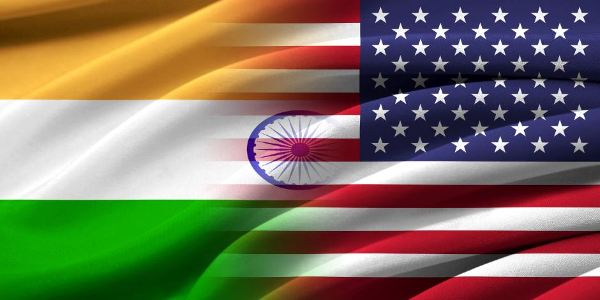NEW DELHI: India and the US have concretised a plan to expand their partnership in the space sector by deciding to work on an agreement on space situational awareness (SSA) during the first in-person bilateral meeting between PM Narendra Modi and US President Joe Biden recently on the sidelines of the Quad summit.
Though Isro and Nasa have been cooperating on separate missions like synthetic aperture radar satellite NISAR project and Chandrayaan-1, this is the first time both the countries have decided to jointly work on a framework for SSA, which involves tracking space objects both natural like meteors and man-made such as satellites. SSA involves collating data on orbiting satellites, rocket parts and space debris and monitoring threats to a country’s space assets from any hostile satellite and analysing such data to convert them into actionable information to deal with such threats.
The Indo-US joint statement issued in Washington highlighted plans to finalise “a space situational awareness MoU that will help in sharing of data and services towards ensuring the long-term sustainability of outer space activities by the end of the year”. The MoU plan advanced as “India has developed significant space capabilities over the decades and is a deeply invested party. The US has recognised that it can’t unilaterally define the space order anymore and is looking for partners,” said the MEA quoting from the statement.
Expressing happiness on the proposed SSA pact, Isro chairman K Sivan told TOI, “Once the MoU is signed, it will help us acquire accurate space data and give a boost to our exercise to safeguard India’s space assets and execute satellite collision avoidance missions in an optimum way.” He said India’s infrastructure set up for SSA activities like the SSA Control Centre (NETRA project) is “not sufficient enough to protect our satellites from space debris. NETRA, once fully active, will become part of the global information-sharing network but we need data from other agencies to accurately monitor our satellites all the time. Space has become crowded therefore info-sharing is vital”.
The Isro chairman said “there are three ways of handling space debris: First, whenever space debris is in close proximity of our satellites, a collision avoidance manoeuvre is done. Second, the space debris removal drive can be launched in which some countries are already engaged and third one is a mitigation plan to reduce debris by bringing dead satellites into the Earth’s atmosphere and burning them down. But all these three processes can’t be done in isolation and need assistance from other agencies”.
Former Isro chief A S Kiran Kumar told TOI, “More and more players are putting objects in space and therefore the (satellite) numbers have started increasing significantly. As a result, countries require better space traffic management and debris mitigation systems for which SSA, which has a wider definition (has both strategic and non-strategic significance), is very much needed. The proposed MoU is a good development and will august well for the global community.”
Air Marshal Vivek Ram Chaudhari, who is set to take over as IAF chief next month, recently said India does not have indigenous capability to observe, track and identify non-cooperative objects in outer space. “This not only restricts our defensive counter-space capabilities but also limits our anti-satellite capability in future. Therefore, SSA is the need of the hour and we should be able to know hostile manoeuvres by adversaries’ space objects.”
Elaborating on hostile satellites, defence expert and former DRDO scientist Ravi Kumar told TOI that “SSA involves not only monitoring our space assets but also keeping a watch on hostile satellites. It is believed that some developed countries possess sophisticated satellites that contain drone-like micro satellites, which can be used in space to target the rival’s space assets. Therefore, awareness about the rival’s or enemy’s space assets is key. The proposed agreement will be mutually beneficial for both India and the US.”
Globally, more than 80 countries have launched a satellite into orbit compared to only 15 in the early 1980s. India, which has launched nearly 120 satellites since the first liftoff of Aryabhatta satellite in 1975, has around 50 active satellites in space.
As of 2019, more than 128 million pieces of space debris smaller than 1 cm (0.4 in), 900,000 pieces of debris 1–10 cm, and around 34,000 pieces larger than 10 cm (3.9 in) were estimated to be in orbit. There are approximately 23,000 pieces of debris larger than a softball orbiting the Earth. The US department of defence’s global Space Surveillance Network (SSN) monitors around 27,000 pieces of such debris.
Source:Toi
You may also like
-
IAF Aircraft Set Course For Exercise Eastern Bridge VII At Oman
-
India-us Working Together In Areas Like Critical Minerals, Supply Chains And Advanced Technologies: Shri Piyush Goyal
-
Defence Secretary to co-chair 5th India-Philippines Joint Defence Cooperation Committee meeting in Manila
-
2nd India-Japan Finance Dialogue held in Tokyo on 6th September, 2024
-
Prime Minister, Shri Narendra Modi welcomes Crown Prince of Abu Dhabi
